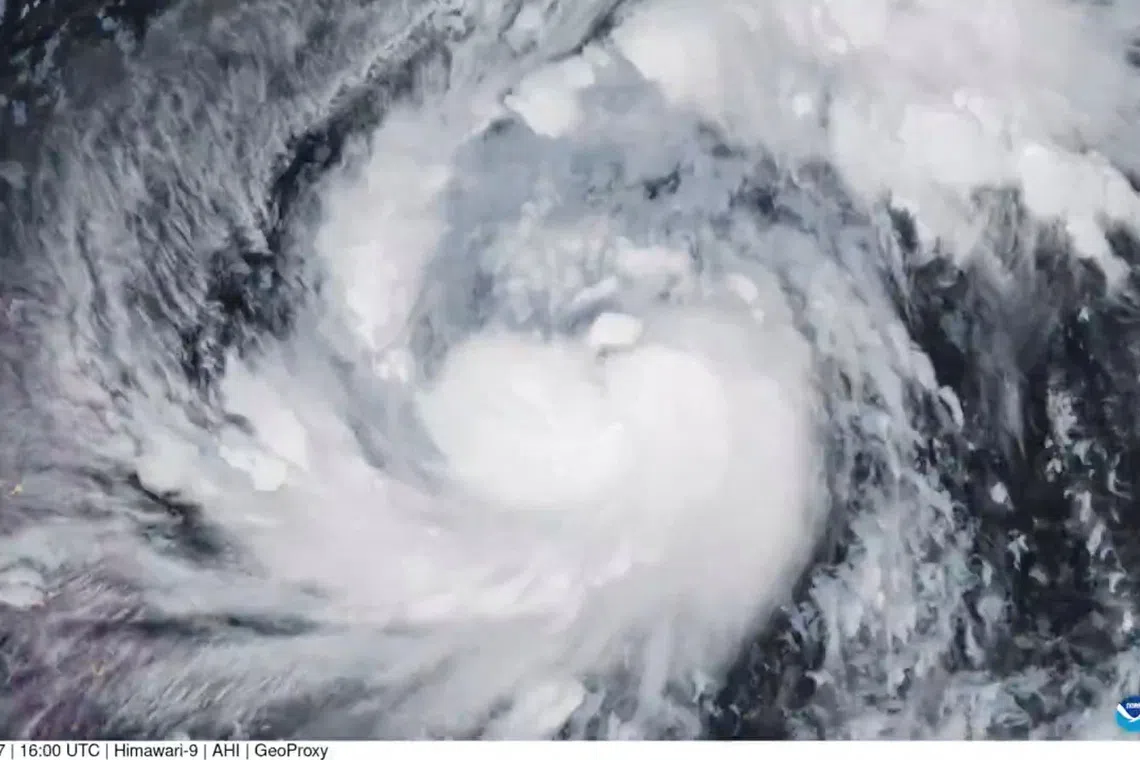Philippines warns of deadly storm surges as massive Typhoon Fung-wong nears super typhoon strength
Sign up now: Get insights on Asia's fast-moving developments

A satellite image showing Storm Fung-Wong, which has intensified into a typhoon, over the Philippine Sea on Nov 7.
PHOTO: REUTERS
Follow topic:
MANILA – The Philippines’ weather bureau warned of life-threatening storm surges of up to 5m and destructive winds as Typhoon Fung-wong churns towards the country’s eastern coast, where it is forecast to intensify into a super typhoon before making landfall late on Nov 9.
The typhoon’s massive circulation, spanning 1,500km, is already lashing parts of the eastern Philippines with heavy rain and winds, weather forecaster Benison Estareja of the bureau, Pagasa, said in a briefing.
“It can cover almost the entire country,” Mr Estareja said.
Typhoon Fung-wong, locally named Uwan, is packing maximum sustained winds of 140kmh and gusts of up to 170kmh, and could intensify to 185kmh as it nears land, Mr Estareja said. That is powerful enough to destroy homes and topple trees and structures.
Up to 200mm of rainfall is expected in eastern Philippine provinces, particularly in the Bicol region, as well as parts of Samar, raising the risk of widespread flooding and landslides, while northern and central Luzon could see 100mm to 200mm of rainfall during its passage.
Pagasa urged residents in low-lying and coastal areas to evacuate to higher ground and halt all marine activities, warning of destructive storm surges that could inundate coastal communities, and warned of violent winds.
Several local governments have suspended classes for Nov 10, and the Philippine flag carrier has cancelled some flights, ahead of the typhoon’s expected landfall.
The warning comes just days after Typhoon Kalmaegi left a trail of destruction across the region, ripping through coastal communities, toppling trees and shredding roofs and windows.
Typhoon Kalmaegi killed 204 people in the Philippines and five in Vietnam
Vietnam’s disaster agency reported damage to nearly 2,800 homes and said about 500,000 people remain without electricity. In the Philippines, raging floods destroyed homes and clogged streets with debris.
Vietnam and the Philippines are highly vulnerable to tropical storms and typhoons owing to their locations along the Pacific typhoon belt, regularly experiencing damage and casualties during peak storm seasons.
In Thailand, Kalmaegi’s lingering impact caused heavy rain and localised flooding in parts of the north-east and central regions.
Scientists have warned that storms such as Kalmaegi are becoming more powerful as global temperatures rise. REUTERS

